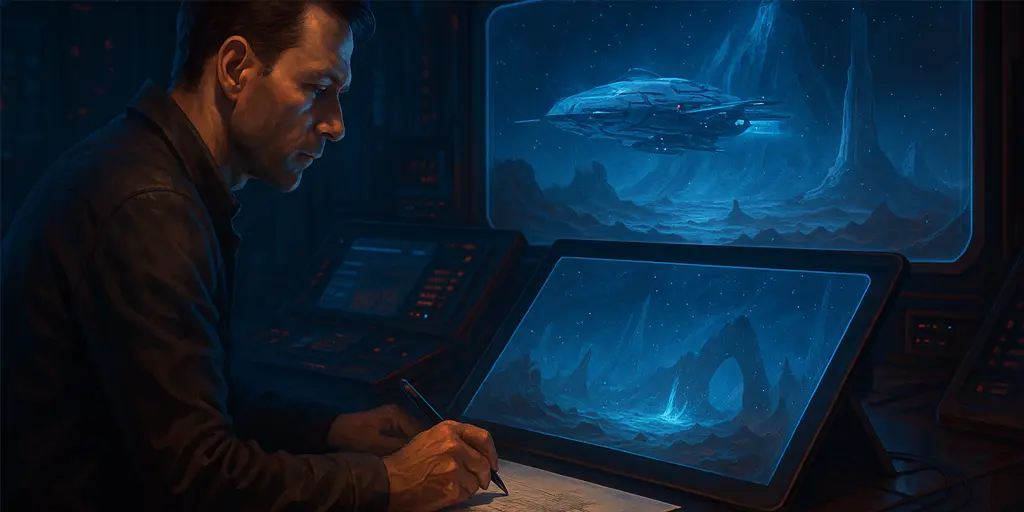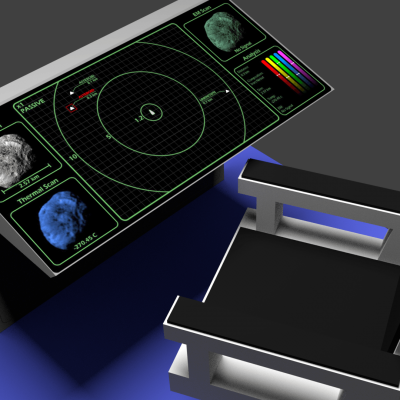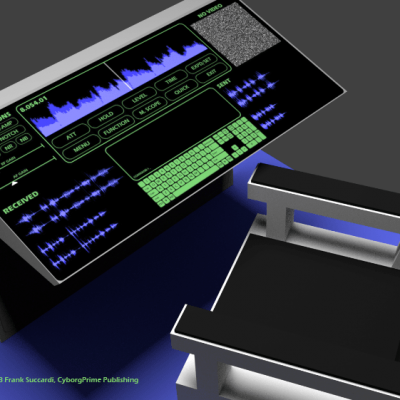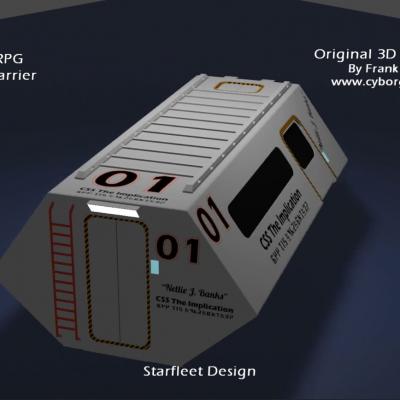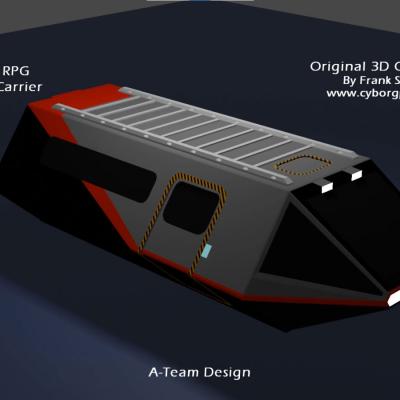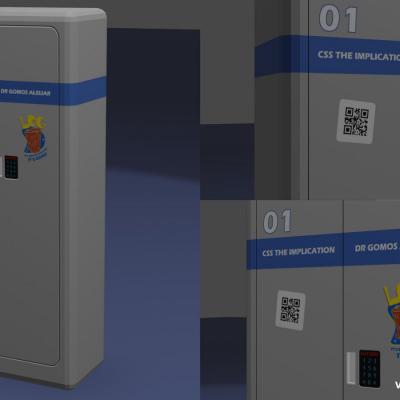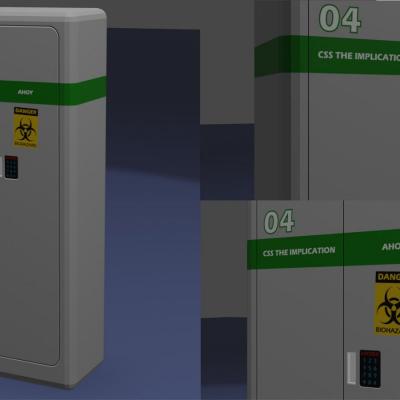AI isn’t replacing Traveller artists — it’s expanding what they can do.
Skill Over Software: The Case for Creative Evolution
As the Traveller Aid Society (TAS) community evolves, the ethical use of AI tools can empower a new generation of creators to bring the Third Imperium to life in ways once thought impossible.
Introduction: The Next Great Artistic Frontier
I write this not only as an advocate for artificial intelligence but as a lifelong artist who has spent more than forty years working where imagination meets technology.
I was there for the birth of desktop publishing, digital art, digital cameras, and computer-based video production; the moment when creativity and technology first began to merge. I’ve watched these tools evolve from fragile experiments into the foundation of modern media. Photography, once dismissed as a mechanical imitation of reality, has grown into a refined digital art form. Computer graphics, once accused of “cheating,” are now essential to storytelling, film, and design. Each innovation has followed the same pattern: fear, resistance, then transformation.
This article was inspired by recent community conversations about the use of AI-assisted art in Traveller’s TAS program. Many of those discussions raised valid questions about ethics, authorship, and creative integrity. Rather than address those concerns piecemeal, I wanted to explore them in depth—from the perspective of someone who has lived through every major digital revolution in modern art.
The debate over generative AI in art follows the same cycle as every tool before it, only faster. What we are witnessing is not a moral crisis but a technological inflection point. The real question is not whether AI belongs in art, but how artists and creative communities can use it responsibly and with intent.
For those of us contributing to the Traveller RPG and the Traveller Aid Society (TAS) community license, this conversation carries particular weight. TAS represents the collaborative heart of the Traveller universe; it is a shared creative space where small publishers, game masters, and fans expand the Imperium together.
AI tools are now part of that universe. How we choose to integrate them will determine whether we strengthen the creative frontier or retreat behind unnecessary walls.
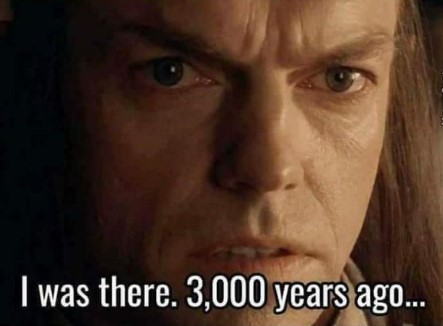
A Life in Digital Art
My journey began as a teenager in the 1980s, experimenting with early 3-D holographic imagery using CAD-3D and LCD shutter glasses on an Atari 1040ST; primitive by today’s standards, yet revolutionary in its day. Those early tools captured my imagination and set me on a lifelong path of exploring how technology could expand artistic expression.
By my late twenties, I was already working at the forefront of digital media. While taking an interactive multimedia class at Santa Fe Community College, I was recruited by TRW Space and Defense to serve as a civilian multimedia expert under government contract. My assignment was with the U.S. Air Force School of Aerospace Medicine (USAFSAM), where I became an instrumental part of developing one of the first large-scale military distance-learning initiatives, the MENTOR 2010 system.
The goal of MENTOR 2010 was to train flight nurses and aerospace-medicine personnel remotely, using then-revolutionary desktop video conferencing technology combined with interactive multimedia lessons delivered locally on computer systems. I helped design both the lesson-authoring stations and the student workstations, ensuring that instructors could build dynamic, media-rich training modules and that learners could interact with them efficiently across a distributed network.
This work represented an early fusion of communication, hardware design, and interactive media; it became the conceptual foundation of what we now call e-learning.
In addition to my work on MENTOR 2010, I contributed to documenting early Predator UAV flight tests for presentation to Congress, producing technical illustrations, diagrams, and multimedia visuals for reports, handbooks, and official briefings.
By twenty-nine, I had transitioned into academia, teaching courses in 3D Studio, Flash animation, and interactive multimedia, helping to train a new generation of digital artists and technologists. Many of my former students have gone on to become art directors, animators, and designers across the creative industries.
Now, at fifty-seven, I’ve spent a lifetime watching technology reshape creativity; from the first paint programs to today’s AI-driven ecosystems, each step has expanded what artists can imagine. Through every shift, one principle has remained constant:
The tool doesn’t define the artist; the artist defines the tool.
Generative AI is simply the latest—and perhaps most powerful—addition to that lineage.
The Chain of Human Authorship
The single greatest misconception about AI art is the notion that the artist is removed from the process.
Nothing could be further from the truth.
In my studio, AI is entirely subordinate to human vision. I adhere to a deliberate, verifiable Chain of Human Authorship, ensuring that the final result remains unmistakably the product of my intent, taste, and labor.
- Sketching and Conceptualization:
Every piece begins with traditional design thinking — composition, perspective, and emotional tone. Sometimes that means a hand-drawn sketch on paper; other times it’s a digital rough-out that frames the subject, lighting, and palette. - AI Iteration and Refinement:
The sketch then becomes input for experimentation. Using ethically trained tools such as Stable Diffusion and Adobe Firefly, I explore textures, light, and atmosphere. I use advanced methods — in-painting, out-painting, iterative prompting — to sculpt the result toward my creative vision. - Final Human Completion:
Once I reach approximately 80% of what I envisioned, I finish the rest manually in Photoshop. This final phase — color correction, compositing, edge cleanup, mood balancing — is where the art truly comes alive.
AI provides acceleration and inspiration, not authorship.
The idea, composition, and execution remain my own.
Thus, every finished piece is AI-assisted, artist-directed, human-finished, and copyrightable.
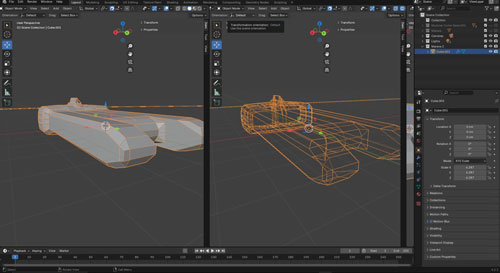 Creating an original 'Empress Marava' model from scratch in Blender
Creating an original 'Empress Marava' model from scratch in Blender
 Finished image with AI-assisted texturing and hand-editing.
Finished image with AI-assisted texturing and hand-editing.
Moral, Legal, and Economic Realities
1. Is AI Built on Stolen Art?
This is the most common and emotionally charged objection: the claim that all AI systems are trained on “stolen” data. That concern was valid during the early, unregulated phase of machine learning. However, the tools I use today, and those used by most professional artists, are built on very different foundations.
Ethical AI now exists.
Adobe’s Firefly, for instance, trains exclusively on licensed and opt-in image libraries. It even provides legal indemnity to users, meaning Adobe itself assumes liability for potential copyright claims. This transparent and verifiable approach represents the new professional standard for AI ethics.
Equally important, generative AI does not store or copy existing images. It does not retrieve files or reproduce prior works. Instead, it encodes complex statistical relationships between pixels—patterns of color, light, form, and composition—in much the same way that a human artist internalizes lessons from studying masterworks.
AI learns structure, not content.
If that process counts as theft, then so does human inspiration.
2. Copyright and Authorship
The U.S. Copyright Office has already clarified that AI-assisted works are eligible for protection so long as a human remains the primary creative force. This principle applies directly to my workflow, and by extension, to any TAS creator who uses AI responsibly.
Copyright is not awarded to a machine but to the mind that conceives, directs, and completes the work.
Because I oversee every phase—from initial concept and composition to refinement and final polish—my authorship is unquestionable. The AI contributes no emotion or intent; it merely accelerates execution under my guidance.
TAS publishers who follow similar human-led processes operate under the same legal and ethical foundation. The ground is stable, provided the artist remains firmly in command.
More info on AI Art Copyright:
- This is What You CAN and CANNOT Copyright with AI
- US Copyright Office changes stance on AI-assisted Artwork
3. The Fear of Job Displacement
Another frequent claim is that AI will put artists out of work. This argument assumes a false dichotomy — that every AI-generated image replaces a paid human commission.
But in my case, and for countless small creators, AI doesn’t replace anyone — it enables us to do work that would otherwise be impossible due to time or budget constraints. I have never hired outside artists for my projects. AI didn’t take a job from anyone; it simply extended what a single independent artist can achieve.
In the broader market, new roles have already emerged — Prompt Engineers, AI Art Directors, Creative Technologists — all of which require strong artistic foundations. The market isn’t eliminating artists; it’s rewarding adaptability.
Those who learn to direct AI effectively will find more doors opening, not closing.
Quality, Oversaturation, and the Myth of “Slop”
The word “slop” has become shorthand for anything amateur, overproduced, or algorithmic. But let’s be honest — slop has always existed, long before AI.
Humans can produce slop all on their own.
A bad painter can make a bad painting. A bad photographer can take a bad photo. The quality of output has always depended on the skill of the practitioner, not the tool.
What we’re seeing now is not an AI problem — it’s a visibility problem. The internet exposes us to a flood of raw, uncurated content, making the bad more noticeable. But within that flood is genuine brilliance, creativity, and innovation.
AI is not the death of craftsmanship. It’s the rebirth of curation.
Traveller’s TAS system already enforces editorial quality. The same principle can easily apply to AI-assisted art. We don’t need bans — we need standards.
Let’s raise the bar, not bar the door.
The Traveller Context: Worldbuilding in the Age of AI
Traveller has always celebrated exploration—across space, time, and technology. From the first jump drives to the discovery of ancient alien ruins, the game’s universe thrives on the tension between the old and the new. It is fitting, then, that its creators now face a similar tension in their craft.
The Traveller Aid Society (TAS) community license empowers fans and small publishers to produce their own adventures, ships, and supplements. For many of these creators, AI tools have become invaluable for visualizing ideas that might otherwise remain only as words on a page—starships, alien landscapes, character portraits, and deck plans.
Imagine a TAS publisher creating a concept image for a new Aslan trade vessel, using AI to prototype the design before refining it by hand for publication. Or a writer enhancing a short adventure with atmospheric images that capture the desolation of a forgotten outpost or the mystery of an ancient artifact.
That is not art theft; it is creative empowerment.
By embracing ethical AI, we ensure that Traveller’s visual universe remains as imaginative and diverse as its lore. AI does not replace the artist’s vision; it extends the reach of that vision, allowing small creators to explore new worlds of possibility.
In the far future of art—as in Traveller—progress is the true frontier.
Transparency, Accountability, and Community Ethics
At the heart of the debate over AI art lies not fear of the tool, but concern over integrity. People want to trust that creators are honest about their methods and that their work meets a shared professional standard.
That trust can be protected with straightforward, community-driven policy.
Proposed TAS Guidelines for Ethical AI Art
- Disclosure: Creators should clearly note if and how AI tools were used.
- Classification: Distinguish between AI-assisted and AI-generated works.
- Editorial Standards: Apply the same quality checks across all submissions.
- Education: Provide community resources for learning ethical AI workflows.
- Reevaluation: Review and update these guidelines as technology evolves.
Such measures maintain transparency without censorship, ensuring Traveller continues to be both ethical and innovative.
Proposal: TAS AI-Assisted Art Certification Program
To balance creative freedom with quality assurance, the Traveller Aid Society (TAS) program could establish an AI-Assisted Art Certification — a voluntary (or conditional) process for creators who wish to include AI-assisted imagery in their TAS publications.
1. Approved Pipeline
TAS could publish a list of approved AI workflows that meet both ethical and quality criteria.
Examples might include:
- Using models trained on licensed or opt-in datasets, such as Adobe Firefly or Stable Diffusion with CivitAI-curated models.
- Requiring manual finalization and post-production by a human artist (color correction, compositing, and finishing).
- Maintaining verifiable authorship documentation to demonstrate that the human creator directed the process.
2. Certification
Creators could complete a brief TAS AI Workflow Certification, confirming their understanding of:
- Copyright and dataset ethics.
- Disclosure requirements.
- Quality control and image-finishing standards.
Once certified, they would be cleared to use the “AI-Assisted Art Certified” tag in their TAS submissions.
3. Benefits
- Prevents misuse or low-effort “slop” content.
- Reassures traditional artists that quality and ethics remain priorities.
- Gives Mongoose a clear, enforceable policy instead of a subjective debate.
- Builds a community of knowledgeable, responsible AI users who can mentor others.
The goal is not to gatekeep creativity but to guide it — ensuring that every TAS project using AI meets the same standards of quality, transparency, and professionalism that define the Traveller community.
Empathy for Traditional Artists
As someone who has created and taught digital art for decades, I deeply understand the anxiety many artists feel. Every new tool seems to rewrite the rules overnight. It’s easy to fear becoming obsolete.
But history shows us that tools don’t erase talent — they amplify it. Digital art didn’t destroy oil painting; it created new markets. Photography didn’t end drawing; it redefined realism.
AI will be the same. Those who master it will thrive, and those who resist it will still find space for their own traditional voices. The future isn’t binary — it’s hybrid. We can honor our heritage while embracing our horizon.
Art, Exploration, and the Traveller Spirit
Art and exploration have always shared the same purpose: to make the unseen visible. In Traveller, we chart unknown worlds; in art, we chart the unknown within imagination.
AI is simply another jump drive—a new means of reaching further, faster, and with renewed creative fuel. It does not remove the wonder of the journey; it expands the map.
Just as Scouts of the Third Imperium venture into uncharted space, artists must also brave the frontiers of emerging technology. Our responsibility is not to fear the unknown, but to explore it—with integrity, curiosity, and courage.
The spirit of exploration that drives Traveller is the same spirit that drives art itself.
Conclusion: The Challenge Isn’t the Tool — It’s the Talent
The future of the Traveller TAS program will not be defined by the tools we forbid, but by the standards we uphold. AI art is not the death of human creativity; it’s an invitation to refine what makes us creative in the first place.
Let us:
- Embrace transparency over secrecy.
- Champion skill over software.
- Pursue quality over censorship.
If we do, the Traveller community will not merely survive this new era — it will thrive.
Because the heart of Traveller has never been about what tools we use. It’s about the spirit of exploration — of imagination charting new territory.
That, more than anything, remains the true art of creation.
— CyborgPrime
Digital Artist | Game Designer | Educator
Get Traveller Guides by Email
Short guides, tools & updates. Unsubscribe anytime.
